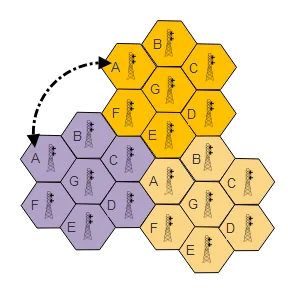
Mastering IOT
Build modern IoT solutions that secure and monitor your IoT infrastructure
Colin Dow, Perry Lea
- 782 pages
- English
- ePUB (adapté aux mobiles)
- Disponible sur iOS et Android
Mastering IOT
Build modern IoT solutions that secure and monitor your IoT infrastructure
Colin Dow, Perry Lea
À propos de ce livre
Leverage the full potential of IoT with the combination of Raspberry Pi 3 and Python and architect a complete IoT system that is the best fit for your organization
Key Features
- Build complex Python-based applications with IoT
- Explore different concepts, technologies, and tradeoffs in the IoT architectural stack
- Delve deep into each element of the IoT design—from sensors to the cloud
Book Description
The Internet of Things (IoT) is the fastest growing technology market. Industries are embracing IoT technologies to improve operational expenses, product life, and people's well-being.
We'll begin our journey with an introduction to Raspberry Pi and quickly jump right into Python programming. We'll learn all concepts through multiple projects, and then reinforce our learnings by creating an IoT robot car. We'll examine modern sensor systems and focus on what their power and functionality can bring to our system. We'll also gain insight into cloud and fog architectures, including the OpenFog standards. The Learning Path will conclude by discussing three forms of prevalent attacks and ways to improve the security of our IoT infrastructure.
By the end of this Learning Path, we will have traversed the entire spectrum of technologies needed to build a successful IoT system, and will have the confidence to build, secure, and monitor our IoT infrastructure.
This Learning Path includes content from the following Packt products:
- Internet of Things Programming Projects by Colin Dow
- Internet of Things for Architects by Perry Lea
What you will learn
- Build a home security dashboard using an infrared motion detector
- Receive data and display it with an actuator connected to the Raspberry Pi
- Build an IoT robot car that is controlled via the Internet
- Use IP-based communication to easily and quickly scale your system
- Explore cloud protocols, such as Message Queue Telemetry Transport (MQTT) and CoAP
- Secure communication with encryption forms, such as symmetric key
Who this book is for
This Learning Path is designed for developers, architects, and system designers who are interested in building exciting projects with Python by understanding the IoT ecosphere, various technologies, and tradeoffs. Technologists and technology managers who want to develop a broad view of IoT architecture, will also find this Learning Path useful. Prior programming knowledge of Python is a must.
Foire aux questions
Informations
Long-Range Communication Systems and Protocols (WAN)
Cellular connectivity

Governance models and standards
- Must be an all-IP, packet-switched network
- Interoperable with existing wireless
- A nominal data rate of 100 Mbps when the client is moving and 1 GBps while the client is fixed
- Dynamically share and use network resources to support more than one user per cell
- Scalable channel bandwidth of 5 to 20 MHz
- Seamless connectivity and global roaming across multiple networks
| Feature | 1G | 2/2.5G | 3G | 4G | 5G |
| First Availability | 1979 | 1999 | 2002 | 2010 | 2020 |
| ITU-R Specification | NA | NA | IMT-2000 | IMT-Advanced | IMT-2020 |
| ITU-R Frequency Specification | NA | NA | 400 MHZ to 3 GHz | 450 MHz to 3.6 GHz | TBD |
| ITU-R Bandwidth Specification | NA | NA | Stationary: 2 Mbps Moving: 384 Kbps | Stationary: 1 Gbps Moving: 100 Mbps | Min Down: 20 Gbps Min Up: 10 Gbps |
| Typical Bandwidth | 2 Kbps | 14.4-64 Kbps | 500 to 700 Kbps | 100 to 300 Mbps (peak) | TBD? |
| Usage/Features | Mobile telephony only. | Digital voice, SMS text, caller-ID, one-way data. | Superior audio, video, and data. Enhanced roaming. | Unified IP and seamless LAN/WAN/WLAN. | IoT, ultra density, low latency. |
| Standards and Multiplexing | AMPS | ...